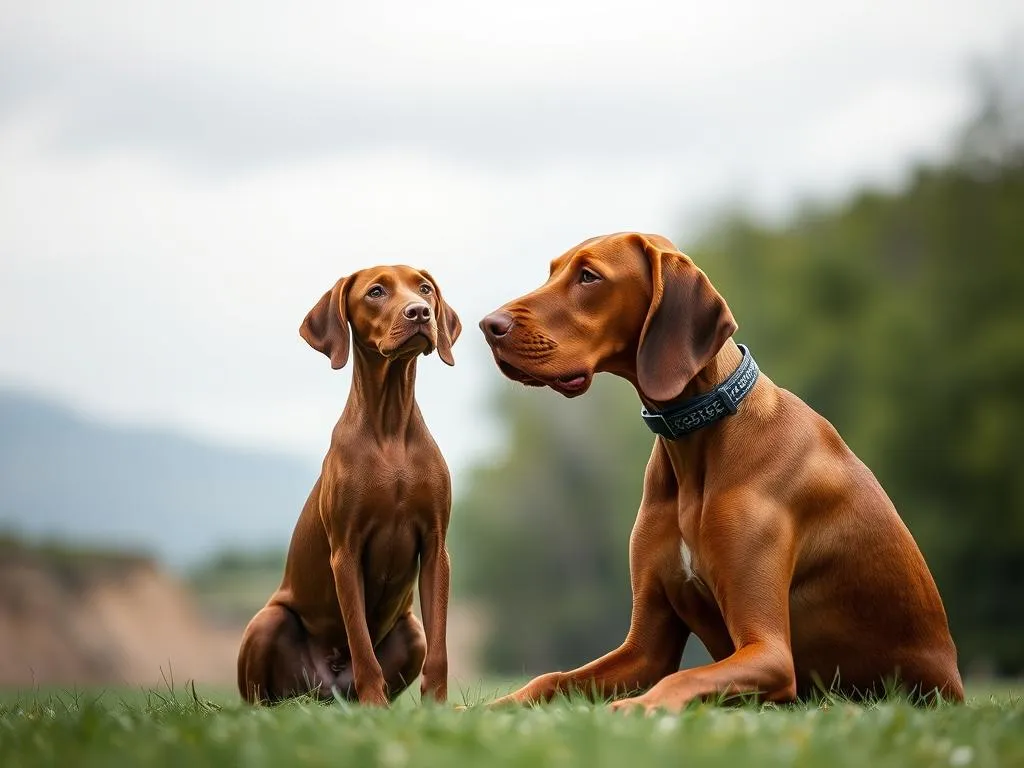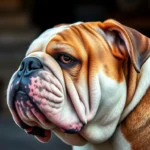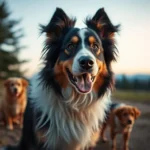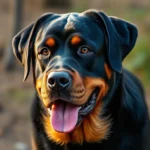
Understanding the characteristics of different dog breeds is crucial for potential pet owners. Each breed comes with its own unique traits, history, and temperament that can significantly impact a family’s lifestyle. In this exploration, we will compare and contrast two distinct breeds: the Vizsla and the Redbone Coonhound. By the end of this article, you will have a clear understanding of both breeds, helping you make an informed decision about which might be the best fit for you.
Overview of Dog Breeds
Importance of Dog Breeds
The importance of dog breeds cannot be overstated. Each breed has been developed over centuries for specific roles—be it companionship, work, or hunting. Understanding how breed affects temperament, health, and behavior is essential in ensuring a harmonious relationship between pet and owner. For example, hunting breeds like the Vizsla might have higher energy levels and different training needs than more laid-back breeds.
Brief History of Dog Breeds
Dog breeds have evolved over thousands of years from their wild ancestors. The domestication of dogs is a story of partnership between humans and canines, shaped by cultural, geographical, and environmental factors. Organizations such as the American Kennel Club (AKC) have recognized various breeds, formalizing their characteristics and standards. This recognition plays a significant role in breed preservation and responsible breeding practices.
Vizsla Overview
History and Origin
The Vizsla is a breed steeped in history, originating from Hungary. These dogs were initially bred as hunting companions and have long been valued for their ability to point and retrieve game. Their cultural significance in Hungary is profound, often referred to as “the Hungarian pointer.” Over time, they have transitioned from working dogs to beloved family pets while still retaining their hunting instincts.
Physical Characteristics
The Vizsla is characterized by its elegant build and athleticism. Typically, they weigh between 45 to 65 pounds and stand around 21 to 24 inches tall at the shoulder. Their coat is short, smooth, and produces a striking golden rust color. Notable features include long, floppy ears, expressive eyes, and a sleek body, which contribute to their overall gracefulness.
Temperament and Behavior
Vizslas are known for their affectionate and loyal nature. They thrive on human companionship and can become quite attached to their families, making them excellent family dogs. However, they require ample socialization and training from a young age to develop their social skills. These dogs are highly energetic and typically need at least 60 to 90 minutes of exercise daily, making them ideal for active families.
Health Considerations
Common health issues for Vizslas include hip dysplasia, elbow dysplasia, and certain types of cancer. Their average lifespan is around 12 to 14 years. Regular veterinary check-ups, a balanced diet, and appropriate exercise can help maintain their health and well-being.
Redbone Coonhound Overview
History and Origin
The Redbone Coonhound has its roots in the United States, specifically in the South. Bred primarily for hunting raccoons, these dogs are known for their tracking ability and endurance. Their history is tied closely to American hunting culture, and they have been celebrated for their versatility in the field.
Physical Characteristics
The Redbone Coonhound is a medium to large-sized breed, weighing between 45 to 75 pounds and standing approximately 21 to 27 inches tall at the shoulder. They have a short, smooth coat that is typically a rich red color. Their distinct features include long, floppy ears, a well-defined muzzle, and a strong, lean build that showcases their athletic prowess.
Temperament and Behavior
Known for their friendly and sociable nature, Redbone Coonhounds are great companions for families. They are gentle with children and are generally good with other pets. Like Vizslas, they require socialization and training to mitigate any potential stubbornness. They have a high energy level and need substantial daily exercise—at least 60 to 90 minutes—making them a great fit for active households.
Health Considerations
The Redbone Coonhound faces some health challenges, including hip dysplasia, ear infections, and certain skin conditions. Their lifespan is typically around 10 to 12 years. Regular veterinary care, a good diet, and an active lifestyle can aid in maintaining their health.
Key Comparisons between Vizsla and Redbone Coonhound
Physical Traits
Here’s a side-by-side comparison of the physical traits of the Vizsla and Redbone Coonhound:
| Trait | Vizsla | Redbone Coonhound |
|---|---|---|
| Size | 21-24 inches tall | 21-27 inches tall |
| Weight | 45-65 pounds | 45-75 pounds |
| Coat | Short, smooth, golden rust | Short, smooth, rich red |
| Distinct Features | Long ears, sleek build | Long ears, muscular build |
The Vizsla tends to be slightly shorter and lighter than the Redbone Coonhound, but both breeds are athletic and elegant.
Temperament and Behavior
When it comes to temperament, both breeds are known for their friendly dispositions. However, there are subtle differences:
- Vizsla: Highly affectionate, loyal, and prone to separation anxiety if left alone for long periods. They bond closely with their families and thrive on companionship.
- Redbone Coonhound: Friendly and sociable but may exhibit stubbornness. They can be independent thinkers, which may require a different approach to training.
Both breeds require significant exercise, but Vizslas may need more structured activities due to their higher energy levels.
Health and Lifespan
Both breeds face similar health issues, primarily hip dysplasia. However, the Vizsla has a slightly longer lifespan, averaging 12 to 14 years compared to the Redbone Coonhound’s 10 to 12 years.
Suitability for Families
When considering family compatibility:
- Vizsla: Best suited for active families who can provide daily exercise and companionship. They are excellent with children and thrive on interaction.
- Redbone Coonhound: Also great with families, particularly those who enjoy outdoor activities. Their friendly demeanor makes them good companions, though their independent nature may require more patience during training.
Training and Care
Training Needs
Both breeds benefit from positive reinforcement training, but they have different learning styles:
- Vizsla: Highly trainable and eager to please, but they can be sensitive. Consistent, positive methods work best, and early socialization is crucial.
- Redbone Coonhound: Can be stubborn and may require a firm but gentle approach. Consistency is key, and they may respond well to training that involves tracking games or scent work.
Grooming Requirements
Grooming needs are relatively low for both breeds:
- Vizsla: Their short coat requires minimal grooming; regular brushing helps reduce shedding.
- Redbone Coonhound: Also low-maintenance, but they may need more attention to their ears due to their floppy nature, which can trap moisture.
Nutritional Needs
Both breeds require a high-quality diet suited to their energy levels:
- Vizsla: Typically need a diet rich in protein and healthy fats, with feeding divided into two meals to manage energy levels.
- Redbone Coonhound: Also benefit from a high-protein diet, but their portion sizes may vary based on their activity level.
Choosing the Right Breed for You
Lifestyle Considerations
Choosing between a Vizsla and a Redbone Coonhound should reflect your lifestyle. If you are highly active and can dedicate time to companionship, a Vizsla may be ideal. If you prefer a friendly dog that can also enjoy some independence, the Redbone Coonhound may be the better choice.
Adoption vs. Buying
Both breeds can be found through reputable breeders or rescue organizations. Adopting can provide a loving home to a dog in need, while purchasing from a breeder allows for specific breed traits but requires thorough research to ensure responsible practices.
Final Thoughts
In summary, both the Vizsla and the Redbone Coonhound bring unique qualities and charm to the table. While they share similarities in energy and family compatibility, their differences in temperament and training approaches may influence your choice. Reflecting on your lifestyle and preferences will guide you in selecting the right breed for your home.
Conclusion
Understanding the differences and similarities between the Vizsla and Redbone Coonhound is crucial for making an informed decision about which breed may best fit your family. Each dog possesses distinct traits that cater to various lifestyles. Be sure to consider your personal circumstances, preferences, and the time you can commit to training and companionship before making a decision. Conducting further research and weighing your experiences will help you find the perfect canine companion for your home.









